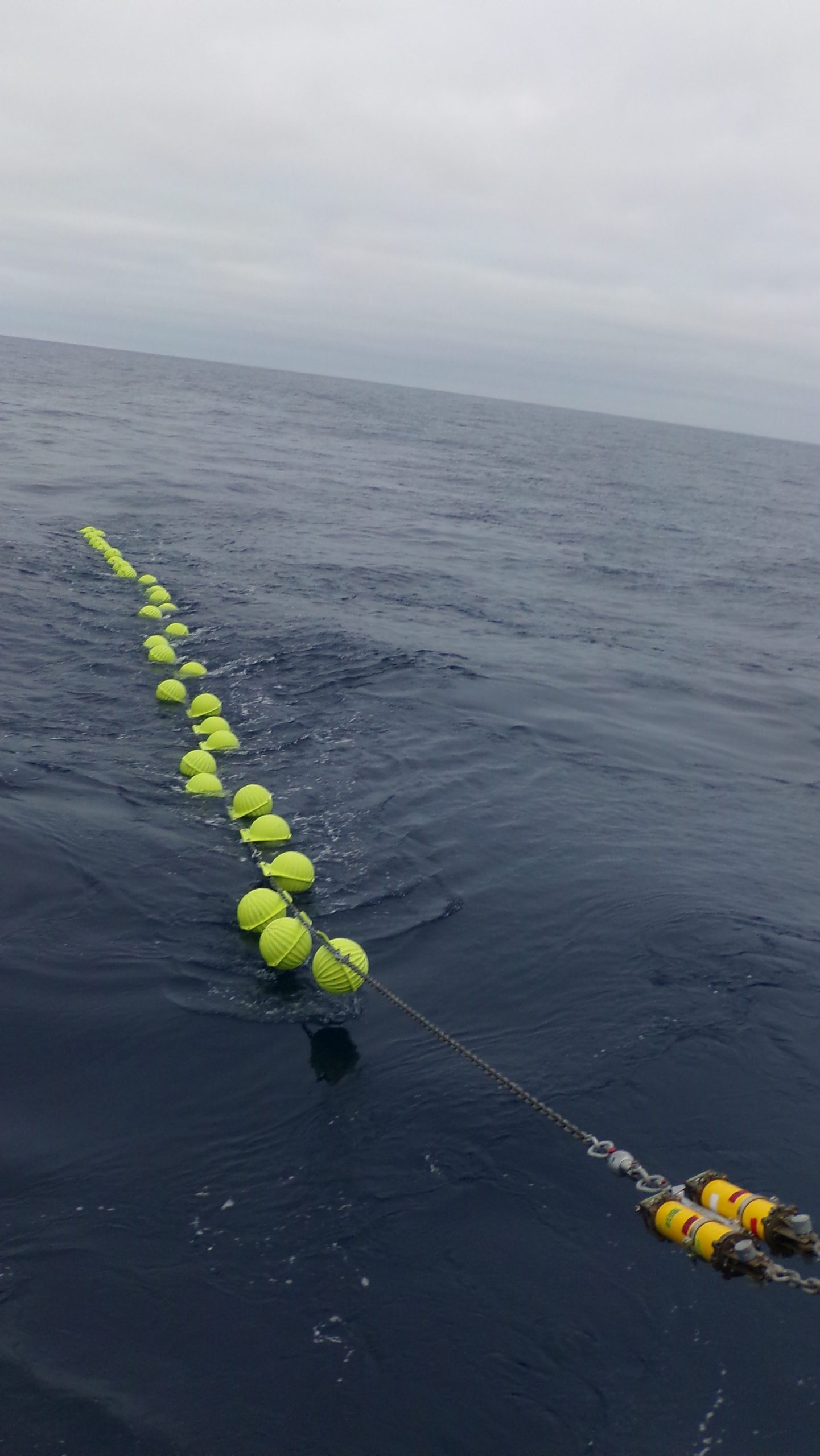Eighth Turn of Station Papa Array Set for July
After 20 months in the water, the Global Station Papa Array will be turned (old moorings recovered and new ones deployed) in July for the eighth time. Normally, this array is turned every year, but last year the trip was cancelled due to constraints imposed by the COVID-19 pandemic. In early July, the OOI team will head to Seward, Alaska to begin preparations for this long-due operation.
The OOI team will arrive in Seward and load the R/V Sikuliaq with over 54 tons of equipment. Following one week of equipment mobilization and build, and a precautionary seven-day COVID isolation period, the team will depart for a 16-day cruise in the Northeast Pacific. The team will recover three Station Papa subsurface moorings and deploy three new ones. Along the way, they will also deploy two Open Ocean Gliders, recover one Profiling Glider, and conduct 11 CTD casts, which will help calibrate and validate the instruments on the array. The design of the moorings and gliders, as well as their planned locations, can be found here.
The robust array was designed for a 12-month deployment between turns, but due to COVID this interval had to be extended to 20 months. The extended duration may have affected data quality since bio-fouling on instruments accumulates over time. However, past experience with extended durations has been positive such that the team’s expectations regarding data quality is high.
“Regular maintenance is vital for keeping the arrays working and collecting data, so this cruise is an especially important one,” said Chief Scientist Kris Newhall, who leads the seven members of the Station Papa 8 team.
The moorings have several design updates, including improved controllers and new positioning beacons with GPS and flashers built into the housing. The upgrades will increase the performance of the moorings and simplify recovery operations.
The Global Station Papa Array is an important part of the OOI network, and the data it has collected is helping to shed light on the physical and biological dynamics for this region of the North Pacific.

